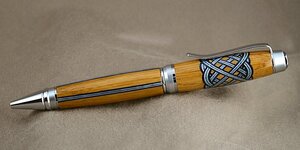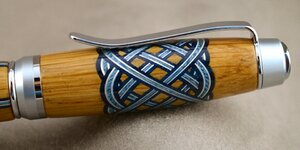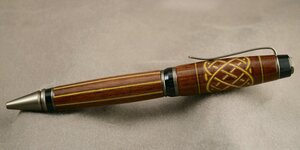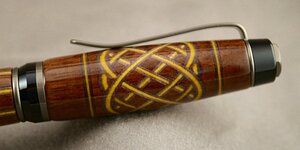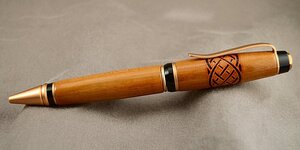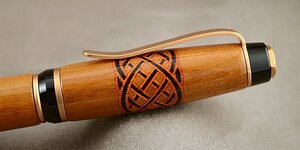Brian G
Member
I've had these done for a while, but I had not taken the time to take photographs. Short summary is that I mill stock to an octagon, cut the kerfs with a 1/16" kerf circular saw blade in a table saw, and fill the kerfs with the "rope" material.
First up is stock white oak. The knot material is aluminum flashing and two shades of blue dyed veneer. The knot angle is approximately 52°. Finish is CA.
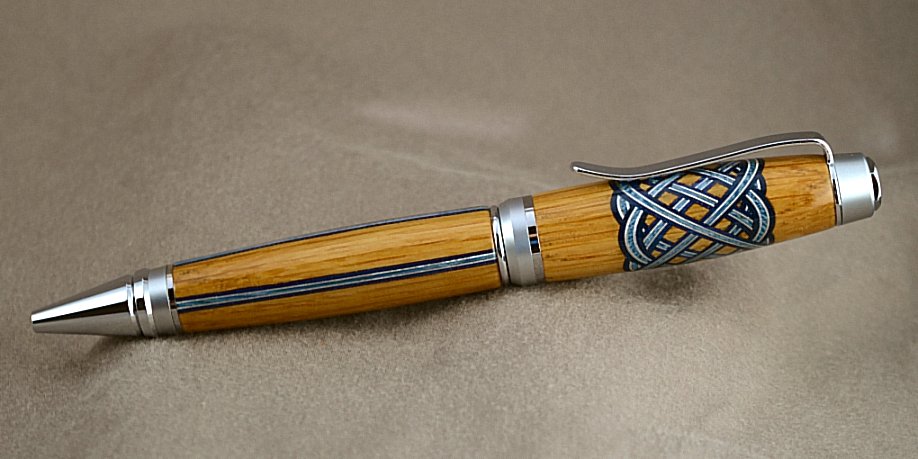
A closer look at the knot. What looks like ghosting near the finial is some kind of shadow or reflection.
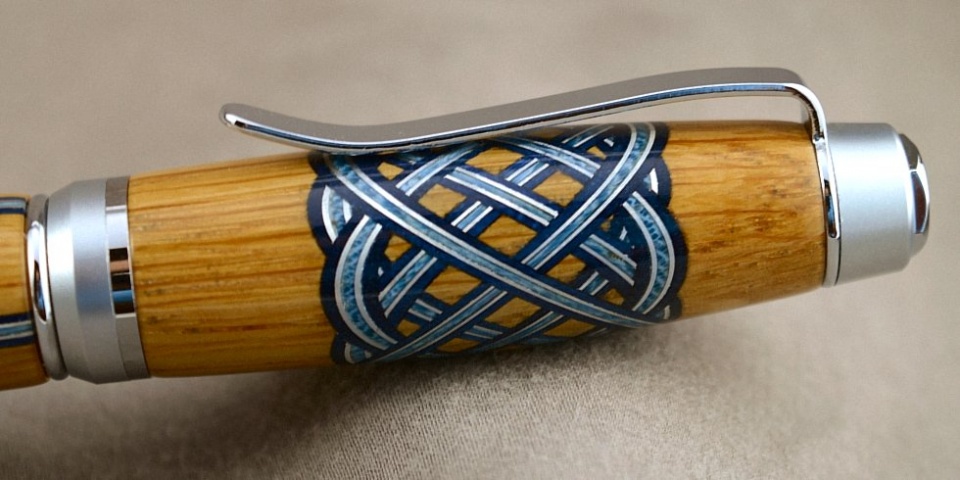
Next is stock black walnut. The knot material is purple and yellow dyed veneer. Knot angle is about 52°. The color contrast isn't as striking as I was hoping to see, but it's probably the most technically "perfect" knot I've made. CA finish.
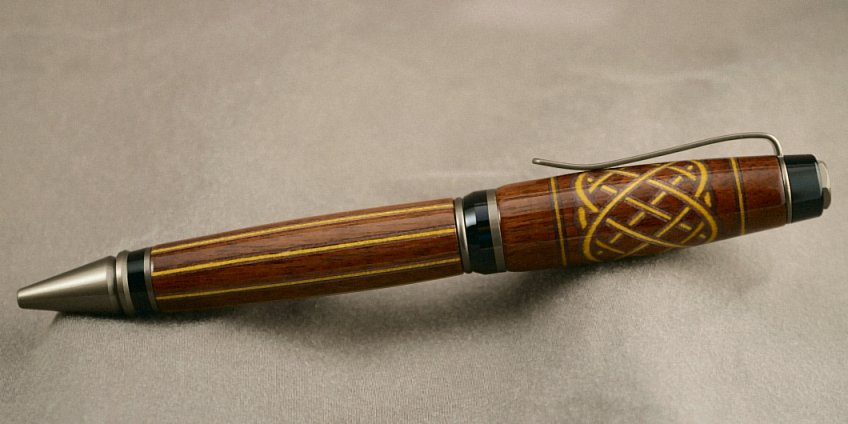
A closer look at the knot, showing that darn ghosting shadow or reflection.
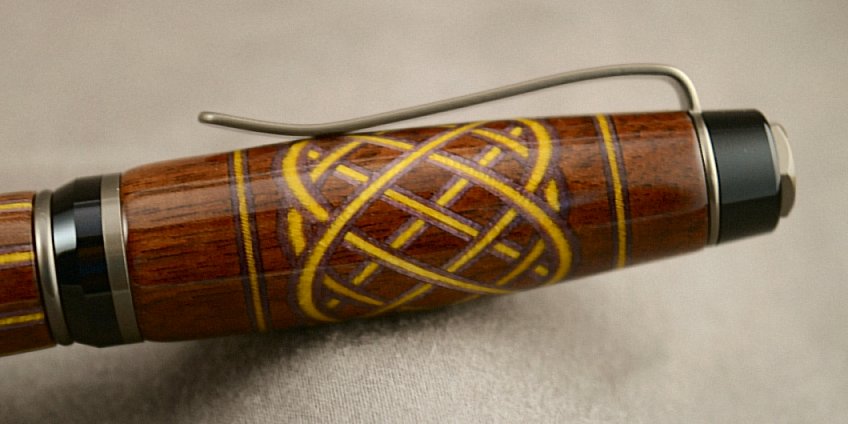
Last is stock cherry. The knot material is black and orange dyed veneer. Knot angle is 45°, which I think is a little too compact.
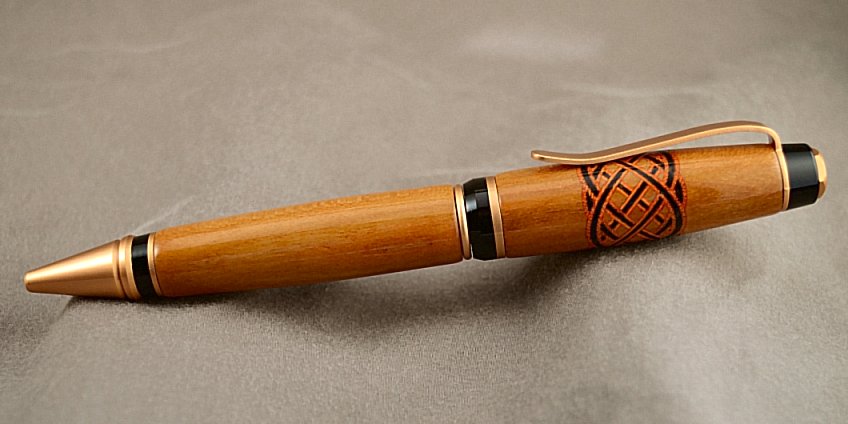
I like how the orange veneer end grain gives the appearance of a rope.
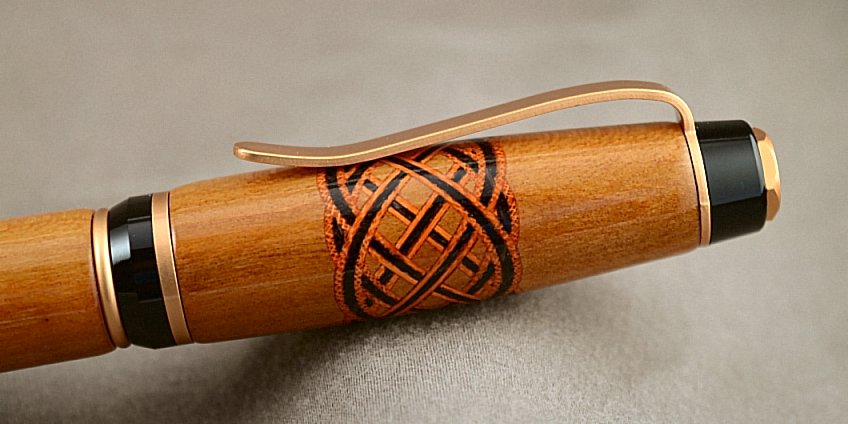
Feedback welcomed, critiques accepted, and thank you for looking.
First up is stock white oak. The knot material is aluminum flashing and two shades of blue dyed veneer. The knot angle is approximately 52°. Finish is CA.
A closer look at the knot. What looks like ghosting near the finial is some kind of shadow or reflection.
Next is stock black walnut. The knot material is purple and yellow dyed veneer. Knot angle is about 52°. The color contrast isn't as striking as I was hoping to see, but it's probably the most technically "perfect" knot I've made. CA finish.
A closer look at the knot, showing that darn ghosting shadow or reflection.
Last is stock cherry. The knot material is black and orange dyed veneer. Knot angle is 45°, which I think is a little too compact.
I like how the orange veneer end grain gives the appearance of a rope.
Feedback welcomed, critiques accepted, and thank you for looking.

